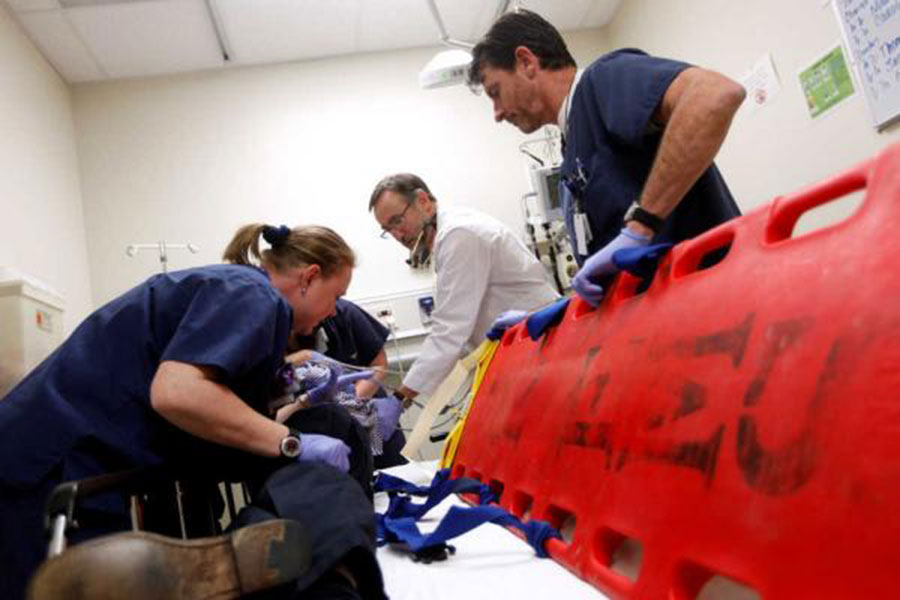“Hello base, this is Medic 62 inbound with 49 year old female, status post syncope and emesis, complaining now of shortness of breath. Denies chest pain. She is currently A&Ox4, vital signs are stable and we have IV access. Our eta is 3 minutes.”
* Base is short for base hospital, a term that was created because the paramedics had to have a single hospital that they could call to go outside their standard protocols. They would speak with an RN or MD to get permission to deliver a drug or perform a procedure that was within their scope but protocols dictated that permission must be granted.
* emesis is vomiting; A&Ox4 is awareness of 1)person 2)place 3) time and 4) event; eta is estimated time of arrival
This call will be made from the field by the paramedic to the hospital that is receiving the patient. The nurse who takes the call will facilitate an open bed for the patient. She (or he!) will notify any necessary staff of the patients pending arrival and brief them on the few details that she knows.
How critical the patient is will dictate how much staff awaits their arrival. In this case, it would probably be 1-2 RN’s plus a support staff such as an ER tech or an LVN (licensed vocational nurse). This would also vary based on how busy the ER is. The MD may or may not decide to be at the bedside when the patient arrives.
A more detailed report will be delivered from the paramedic to the receiving nurse. He will review the full assessment and any medications, interventions or procedures he performed prior to his arrival. He will tell the nurse exactly what time any medications were given, how much, and by what route (mouth, IV, etc.).
Ideally, he will leave a copy of his Patient Care Report (PCR) before he leaves. This frequently does not happen and an investigator may waste many hours trying to track down the PCR; which is the only complete documentation of the care rendered by the paramedic. Other issues that may come up during the case development is the amount of space the paramedic has to write up his care is minimal and so abbreviations and brief sentences may lack clarity. See an example PCR here.
While the nurse is receiving this report she and her colleagues will place the patient on a cardiac monitor and get another set of vital signs. They will perform any tests or procedures that are appropriate and report back to the MD as soon as appropriate.
Nurses must have MD orders to administer any medications or run any tests. In the ER, however, there are commonly policies in place that allow the nurses to perform these tasks based on their assessment of the patient without first asking the MD. These are essentially protocols that allow the nurse to deliver care quickly and effectively without any unnecessary delays.
The MD will then come to the bedside and perform their own assessment of the patient, place any orders that may have already been performed (per protocols) or need to be performed by the nurses. The MD will create a “differential diagnosis” list, usually in their head, and write orders to begin ruling things out so that a final diagnosis can be made.
*Differential diagnosis is a list of possible diagnosis that the patient has based on their symptoms. e.g.: Someone with chest pain would have both acid reflux and heart attack on their differential diagnosis list.
This month’s civil topic is “911 to ER – Pathway of Care.” Topics covered are:
- Case Scenario (7/7/14)
- Emergency Medical Services (7/14/14)
- Emergency Department (7/21/14)
- Discharge (7/28/14)
Note: To see all posts in this topic, click here.











